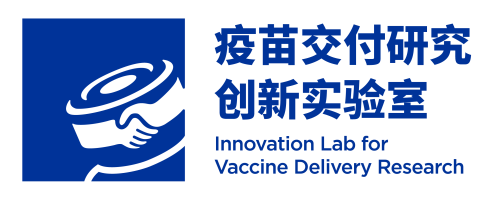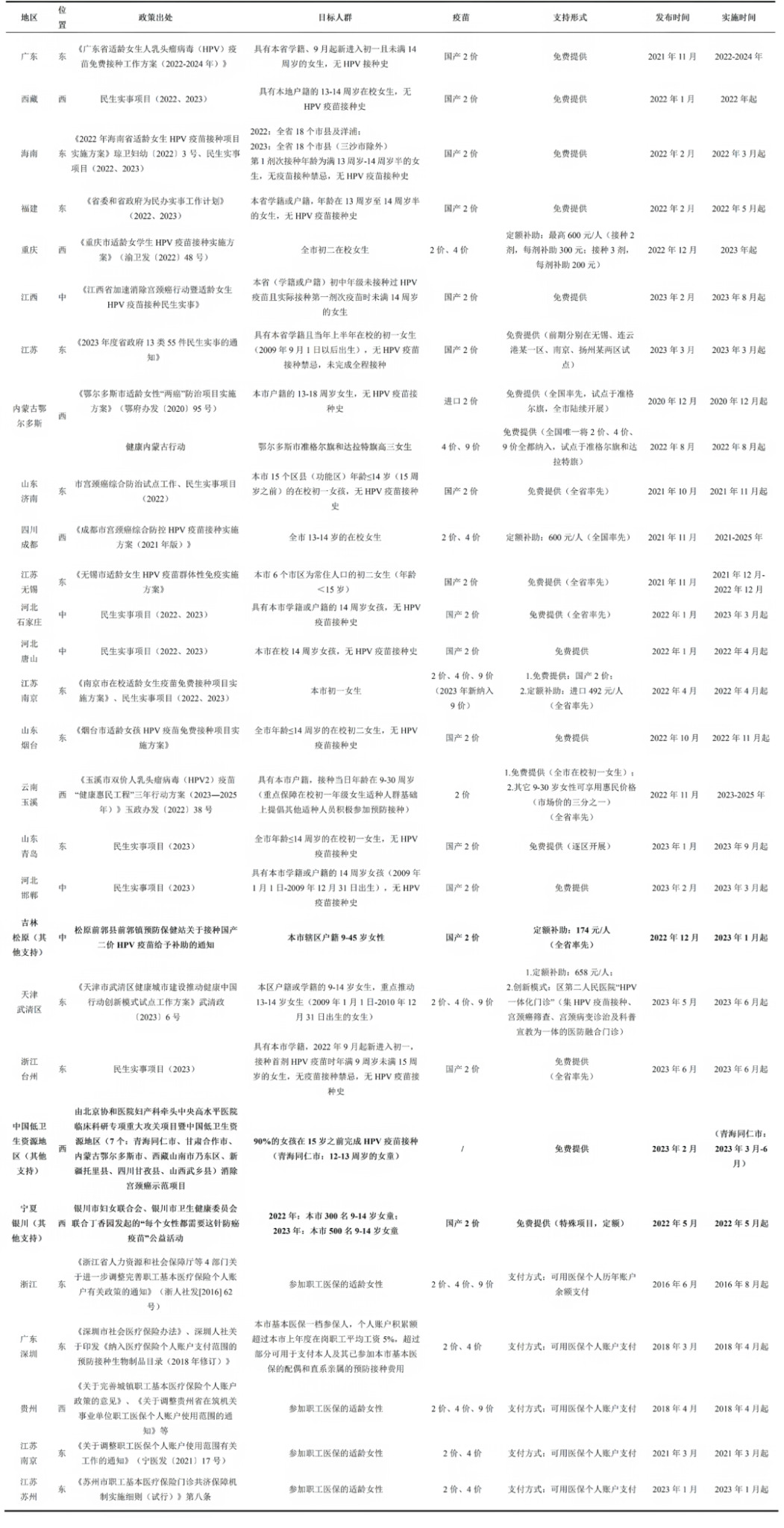The World Health Organization (WHO) proposes four main strategies to achieve the goal of 90% HPV vaccine coverage [1]. 1) Ensure the adequacy and affordability of HPV vaccine: Improving HPV vaccine accessibility by overcoming vaccine supply challenges through collaboration with non-governmental organizations (NGOs), private institutions, and other stakeholders. At the same time, promoting vaccine affordability through market-based intervention while ensuring a healthy market mechanism. 2) Improve vaccine quality and coverage: Enhancing vaccine coverage for vulnerable groups (e.g., out-of-school children and adolescents) through multi-sector collaborations (e.g., integration with school-based immunization programs), innovating community-based vaccination programs, and establishing registry/monitor systems to track and improve vaccine coverage. 3) Improve communication and advocacy: Enhancing awareness of the HPV vaccine should rely on nationwide evidence-based communication and advocacy. To better manage the spread of misinformation about vaccination and eliminate vaccine fear and hesitancy, it is necessary to understand the social and cultural factors that influence vaccination acceptance and conduct effective communication and health education. 4) Improve the efficiency of vaccination: Improve vaccination efficiency by regularly revising national guidelines, policy documents, and strategic plans.
Previous studies have examined the effectiveness of various interventions.
1) For the vaccination target groups and communities, interventions include health education, social mobilization, reminders, incentives, and coercion;
2) For the vaccination workers and other healthcare providers, interventions include education and training, information-system-based reminders and health decision support, and retrospective evaluation and feedback;
3) From the vaccination and health system perspective, interventions include improving vaccine service coverage and implementing school-based immunization programs.
These interventions incorporate a variety of behavioral science theories, such as the health belief model, ecological frameworks, the theory of planned behavior, and protection motivation theory. They also employ behavioral change techniques like reminders and nudges. These strategies aim to create a social environment that encourages vaccination, enhances the coverage and efficiency of vaccination services, and positively influences individuals’ beliefs, attitudes, and behaviors regarding HPV vaccination [2].
Among these interventions, health education, vaccination reminders, and school-based immunization programs have strong evidence support. The study suggests policymakers integrate multiple intervention strategies (e.g., combining health worker training and health education for students and parents with SMS vaccination reminders) to effectively improve vaccination rates with consideration of the cost of intervention and the local context. The number of intervention studies conducted in China is limited; most focus on willingness and attitudes toward vaccination. Therefore, more implementation science studies are needed to explore the effectiveness of interventions among the Chinese population.
For the vaccination, target groups and communities
Vaccine-targeted populations often need to decide whether to receive the vaccine. For adolescents, this decision may be influenced by their parents’ or elders’ attitudes about vaccination. Effective communication, positive health education, reminders, and incentive strategies are necessary to enhance the target population’s and their caregivers’ understanding of the benefits, effects, and safety of HPV vaccines. These strategies can help develop positive attitudes, increase willingness to vaccinate, and build up a supportive environment to raise awareness and motivate vaccine uptake.
Health Education and Social Mobilization
Health education for HPV vaccination target groups and parents of adolescents and social mobilization targeting larger population groups are the most common interventions to raise awareness about vaccine safety and efficacy and increase vaccine coverage. After examining several randomized controlled studies conducted in the United States, the United Kingdom, and Sweden, a Cochrane review with high-quality evidence supports health education among adolescents and their parents, which can increase vaccination rates by nearly 43% (RR: 1.43, 95% CI: 1.16-1.76) [3]. This finding has been confirmed by other systematic reviews [4, 5].
Adolescents are often not yet capable of making independent vaccination decisions. Their parents or other legal guardians often decide whether or not to receive the vaccine. In this case, health education can facilitate adolescents’ and parents’ understanding of vaccination risks and benefits, vaccination procedures, and related information. The World Health Organization suggests that girls should not be the only target of health education. Providing cervical cancer information to mothers of target girls and other older women is also an effective way to involve parents in the HPV vaccination decision-making process. At the same time, men (including fathers of target girls and other boys) should also receive education about HPV vaccines and cervical cancer. Health education targeting school teachers is another important intervention. Schools play a vital role in delivering vaccination education for adolescents. School leaders’ and teachers’ knowledge and attitudes about HPV vaccination significantly influence students’ and parents’ attitudes.
Health education could be carried out in various ways, including face-to-face conversation, telephone, text messages, lectures, and printed materials targeting the communities [6]. With the popularization of mobile devices in recent years, the dissemination of health videos, animations, and other promotional materials through the internet and social media has become a main channel of health education [7]. A retrospective study revealed that the evidence supporting the efficacy of social media in promoting vaccination rates requires further investigation. [8]. Another study found no significant difference between simplified and complex health education tools in improving vaccination outcomes [3]. However, health education materials targeting adolescents and their parents, or materials designed by adolescents or their parents, are more acceptable to the target group [5].
Health education materials should emphasize the prevalence of HPV infections, the vaccine’s safety and efficacy, dispel misconceptions, and clarify the vaccine’s role in cancer prevention. Meanwhile, it’s important to position the HPV vaccine as a routine and cancer prevention measure, not just as protection against sexually transmitted diseases. Therefore, health education and social mobilization intervention should be direct, simple, and effective, tailored to the target population’s primary sources of information, interests, knowledge level, and key barriers.
Vaccination Reminder
Moderate evidence supports that sending reminders to parents of adolescents can help increase HPV vaccination completion rates [9]. These include reminders for vaccinated individuals or their parents to receive subsequent doses at the prescribed times and encouraging those who have not completed the vaccination within the scheduled time. As communication channels evolve, reminders can be delivered through various formats, such as letters, emails, phone calls, text messages, and social media notifications [9]. In recent years, more evidence shows that utilizing the mHealth tools can effectively improve HPV vaccination and completion rates [10].
Incentive
Offering shopping vouchers or other incentives is also one way to increase vaccination rate and vaccination willingness. However, more research is needed to confirm its effectiveness. A positive cluster-controlled study was conducted in 60 schools in London and England, promoting HPV vaccination by offering a £50 shopping voucher to 8th-grade girls who completed informed consent. This study found that 87% of girls in the intervention group turned in their informed consent compared to 67% in the control group. Additionally, a higher percentage of parents of girls in the intervention group (76%) were supportive of HPV vaccination compared to the control group (61%) [11]. Another study conducted in the United Kingdom, where HPV vaccination was incentivized by giving shopping vouchers with a total value of approximately £45 to adolescents who had completed three doses of HPV vaccination, found that although the intervention was effective in increasing willingness to be vaccinated against HPV. It was not sufficient to achieve the vaccine coverage goal [12]. A systematic review also showed insufficient evidence to support the use of monetary incentives for parents to increase the vaccination of preschool children [13]. Therefore, additional studies are needed to verify whether incentives could promote HPV vaccination rates [7].
Mandatory Vaccination
Mandatory vaccination refers to making vaccination mandatory for school enrollment and requesting proof of vaccination records when they enroll in an education program. The current use of this tool has moderate evidence in promoting adolescent vaccinations such as Hepatitis B [7]. However, it has been used less frequently to increase HPV vaccination. The evidence was of weak certainty. A review included three observational studies from the United States, comparing vaccination in states that require mandatory immunization records with other regions. The studies found that while this tool may increase other vaccines’ uptake, it has limited or no effect in increasing HPV vaccination rates because students can often receive exemptions due to religious or medical reasons [9].
For healthcare providers
Primary care health providers are often the main source of HPV-related issues counseling for adolescents and their parents. Physicians’ prudent and impartial advice often guides parental decision-making and enhances adolescents’ willingness to be vaccinated. A meta-analysis of 59 studies revealed that compared with people who did not communicate with their doctors, people having conversations with healthcare providers and receiving the HPV vaccination recommendation outnumbered the percentage of first-dose HPV vaccination [14].
However, there are often concerns and barriers for healthcare workers in providing HPV vaccination advice to adolescents. For example, healthcare workers may be concerned that the HPV vaccine may encourage earlier or riskier sexual behaviors, causing some healthcare workers to delay giving the vaccination advice. Moreover, discussing HPV vaccination with adolescents or their guardians can be time-consuming. The time dedicated to vaccine counseling might reduce the availability of other health services, potentially diminishing job satisfaction. Under this circumstance, interventions such as education and training, information system reminders, and retrospective assessment and feedback need to be conducted to improve the HPV vaccine-related knowledge, attitudes, and behaviors of healthcare providers.
Education and Training
Training and education on HPV vaccines for healthcare workers can enhance their understanding and awareness, aiding the discussions with adolescents and their parents. Training typically includes written materials, videos, lectures, and continuing medical education programs. Several studies indicate that, compared to those who visited community clinics lacking HPV vaccine training, a higher proportion of adolescents who visited clinics received the training completed full vaccination. However, the evidence’s strength is relatively weak due to the absence of larger randomized controlled trials to confirm the intervention’s effectiveness [7].
Reminders and Medical Decision Support in the Information System
Some programs have embedded HPV vaccine-related reminders or decision support systems in health information technology systems for healthcare providers. When close to the vaccination deadlines, notifications will automatically prompt to remind healthcare workers to contact vaccine recipients. However, though healthcare professionals widely accept the strategy, its impact on increasing vaccination rates is limited. [9].
Retrospective Evaluation and Feedback
Retrospective evaluation, feedback, incentives, and exchanges of experiences regarding past immunization services could help improve the immunization service. For example, a study was conducted across 91 primary care settings in North Carolina, United States. The interventions included consultation with primary healthcare providers, evaluating the vaccination status of their served population, visualizing the data, and providing best practice training to healthcare workers. The interventions effectively increased immunization coverage over a five-month period, but the effect was limited over a one-year follow-up period. Further research is needed on the effectiveness of this type of intervention [15, 5].
For the vaccination service system
Refining the vaccination organization, improving the vaccination strategies, enhancing vaccine accessibility, and boosting the efficiency of immunization services are interventions to improve the vaccine coverage.
Extending the Service Place and Time
Improving vaccination convenience is an important means of increasing vaccine coverage. Population-based vaccination programs are often implemented in healthcare facilities like community health centers. Some regions have piloted the service time extension, including weekend or holiday vaccination and service provision outside the healthcare facilities (e.g., mobile vaccination bus and walk-in vaccination service at the workplace). Studies also suggest that healthcare providers should seize every chance—such as emergency department visits or physical checks—to complete the adolescents’ vaccination at hospitals since they have rare chances to visit hospitals.
School-based Immunization Program
School-based vaccination strategies can effectively combine health education with vaccination services targeting adolescents. Several studies conducted in high-income countries (e.g., the United States, New Zealand) and in low- and middle-income countries have shown that, in areas with high enrollment of school girls, a school-based vaccination strategy achieves better vaccine accessibility, higher first-dose coverage, and higher full vaccination rates compared with vaccination at community clinics [9]. The success of this intervention is largely attributed to the school’s role in mobilizing resources, providing health education, and conducting follow-ups to ensure subsequent doses are administered. In addition, there is moderately strong evidence that better vaccine coverage can be achieved by implementing grade- and class-based vaccination strategies in schools than age-based vaccination strategies [7, 9].
The strategy also needs to consider the needs of out-of-school girls, especially those from vulnerable groups (e.g., migrant children, street children, etc.), to encourage them to complete vaccination in healthcare facilities or other venues that provide health services. For areas where the proportion of girls enrolled in school is relatively low, this can be done by combining it with other established interventions such as nutrition programs or polio immunization programs. [16].
Reduce Out-of-pocket Costs
Reducing the out-of-pocket costs of vaccination is an important means of increasing the affordability of vaccination. This goal can be achieved by subsidizing the cost of vaccines, reducing the cost, and adding to the commercial and public insurance package. In a retrospective cohort of free quadrivalent HPV vaccinations conducted in the Midwestern United States, charitable donations provided free HPV vaccinations targeting females aged 10-26 years who did not have public or private insurance or other financial resources. The study found that free vaccination did not improve the timely completion rates of the 3-dose series [17]. Therefore, intervention strategies targeting cost reduction to improve vaccine affordability require further research.
Other Interventions
Utilizing single-dose vaccination, reducing the intervals between doses, and co-administering with other vaccines are vital strategies for enhancing vaccination compliance without compromising efficacy and safety. For example, studies indicate the HPV9 vaccine could be co-administered with MCV4 and Tdap vaccines [18] or concomitantly with REPEVAX (the combination of diphtheria, tetanus, pertussis, and poliomyelitis vaccines) [19]. The co-administrations were generally well tolerated and did not interfere with the immune response to either vaccine. However, studies on shortening the HPV vaccination intervals and co-administration with other vaccines are limited.
Integrated interventions
A growing number of regions have adopted strategies to apply the abovementioned interventions. We could apply proper interventions targeting different stakeholders to tackle the implementation barriers and integrate the vaccination service with the existing health system to improve vaccine coverage. Moderate-strength evidence supports the multiple interventions targeting healthcare providers and adolescents, which could effectively increase the vaccination rate and compliance to complete the vaccination. A study also found the integrated intervention targeting parents and healthcare providers could increase the vaccination rates at 3- and 6-month post-intervention follow-up periods, although the evidence strength is relatively weak [3].
Content Reviewer: Kelly Hunter, Menglu Jiang, Zhangyang Pan, Houser Chen
Page Editor: Jiaqi Zu
References:
- References. World Health Organization: Global strategy to accelerate the elimination of cervical cancer as a public health problem. 2020.
- Batista Ferrer H, Audrey S, Trotter C, Hickman M: An appraisal of theoretical approaches to examining behaviours in relation to Human Papillomavirus (HPV) vaccination of young women. Preventive Medicine 2015, 81:122-131.
- Abdullahi LH, Kagina BM, Ndze VN, Hussey GD, Wiysonge CS: Improving vaccination uptake among adolescents. Cochrane Database of Systematic Reviews 2020(1).
- Jaca A, Mathebula L, Iweze A, Pienaar E, Wiysonge CS: A systematic review of strategies for reducing missed opportunities for vaccination. Vaccine 2018, 36(21):2921-2927.
- Dempsey AF, Zimet GD: Interventions to Improve Adolescent Vaccination: What May Work and What Still Needs to Be Tested. Vaccine 2015, 33:D106-D113.
- Fu LY, Bonhomme L-A, Cooper SC, Joseph JG, Zimet GD: Educational interventions to increase HPV vaccination acceptance: A systematic review. Vaccine 2014, 32(17):1901-1920.
- Acampora A, Grossi A, Barbara A, Colamesta V, Causio FA, Calabrò GE, Boccia S, de Waure C: Increasing HPV vaccination uptake among adolescents: A systematic review. International journal of environmental research and public health 2020, 17(21):7997.
- Odone A, Ferrari A, Spagnoli F, Visciarelli S, Shefer A, Pasquarella C, Signorelli C: Effectiveness of interventions that apply new media to improve vaccine uptake and vaccine coverage: a systematic review. Human vaccines & immunotherapeutics 2015, 11(1):72-82.
- Smulian EA, Mitchell KR, Stokley S: Interventions to increase HPV vaccination coverage: a systematic review. Human vaccines & immunotherapeutics 2016, 12(6):1566-1588.
- Ilozumba O, Schmidt P, Ket JCF, Jaspers M: Can mHealth interventions contribute to increased HPV vaccination uptake? A systematic review. Preventive Medicine Reports 2021, 21:101289.
- Forster AS, Cornelius V, Rockliffe L, Marlow LAV, Bedford H, Waller J: A cluster randomised feasibility study of an adolescent incentive intervention to increase uptake of HPV vaccination. British Journal of Cancer 2017, 117(8):1121-1127.
- Mantzari E, Vogt F, Marteau TM: Financial incentives for increasing uptake of HPV vaccinations: a randomized controlled trial. Health Psychology 2015, 34(2):160.
- Wigham S, Ternent L, Bryant A, Robalino S, Sniehotta FF, Adams J: Parental financial incentives for increasing preschool vaccination uptake: systematic review. Pediatrics 2014, 134(4):e1117-e1128.
- Oh NL, Biddell CB, Rhodes BE, Brewer NT: Provider communication and HPV vaccine uptake: A meta-analysis and systematic review. Preventive Medicine 2021, 148:106554.
- Gilkey MB, Dayton AM, Moss JL, Sparks AC, Grimshaw AH, Bowling JM, Brewer NT: Increasing provision of adolescent vaccines in primary care: a randomized controlled trial. Pediatrics 2014, 134(2):e346-e353.
- Wigle J, Coast E, Watson-Jones D: Human papillomavirus (HPV) vaccine implementation in low and middle-income countries (LMICs): Health system experiences and prospects. Vaccine 2013, 31(37):3811-3817.
- Harper DM, Verdenius I, Harris GD, Barnett AL, Rosemergey BE, Arey AM, Wall J, Malnar GJ: The influence of free quadrivalent human papillomavirus vaccine (HPV4) on the timely completion of the three dose series. Preventive Medicine 2014, 61:20-25.
- Schilling, A., Parra, M. M., Gutierrez, M., Restrepo, J., Ucros, S., Herrera, T., Engel, E., Huicho, L., Shew, M., Maansson, R., Caldwell, N., Luxembourg, A., & Ter Meulen, A. S. (2015). Coadministration of a 9-Valent Human Papillomavirus Vaccine With Meningococcal and Tdap Vaccines. Pediatrics, 136(3), e563–e572.
- Kosalaraksa, P., Mehlsen, J., Vesikari, T., Forstén, A., Helm, K., Van Damme, P., Joura, E. A., Ciprero, K., Maansson, R., Luxembourg, A., & Sobanjo-ter Meulen, A. (2015). An open-label, randomized study of a 9-valent human papillomavirus vaccine given concomitantly with diphtheria, tetanus, pertussis and poliomyelitis vaccines to healthy adolescents 11-15 years of age. The Pediatric infectious disease journal, 34(6), 627–634.





